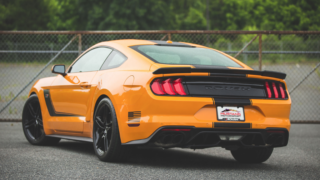RACE FUELS
Ok, so the use of differing octane fuels, race fuels, alcohol, E85 etc – it can all be a bit confusing at the best of time. Different fuels can be a bit of a black art and harder for the general consumer to understand. Now we are by no means field experts, as there are people with specific degrees and qualifications who will talk to you for weeks about different fuels, but I feel we do have enough experience in using and tuning different fuels daily to have grasped the concept and offer a chance at a simple explanation for our customers.
OK, so where to begin.
The bottom line with fuel is this – despite the misconceptions about air, fuel is the secret ingredient to why our cars make power. Fuel is the ingredient that contains the power and energy that is to be released in our engines during combustion, to propel our vehicles (sometimes at ridiculously high speeds). Air is needed as part of the combustion process, but fuel is the key.
Part two is this – Compression makes power and higher compression demands a higher quality fuel. I feel I should also point out at this point that boost is essentially compression – when we add boost to the equation, we are actually increasing the “effective compression” of the engine.
Now, for general commuter use and daily driving purposes, nanna’s Hyundai excel does not need any great amount or type of fuel, in order for the vehicle’s engine to complete it job. But in high performance applications, we are talking a whole different kettle of fish.
In Australia at present, and there are a certain minority of exceptions, 98 octane fuel is the best we have available to us. As far as we, and many car manufacturers are concerned, this is the bare minimum quality of fuel we should be using. If you want to drive a performance vehicle, you need to suck it up and wear the cost of 98 over conventional 91 and 95 octane fuels at the bowser – full stop. If you don’t, you are either risking hurting your engine, or selling yourself short due to penny pinching.
In high performance applications, it must be realized that in order to make the “best” power we possibly can, in some instances, regular pump fuels may not be enough. They will be enough to make “good” power, but due to the limitations of the fuel, we will never be able to truly reach the engine’s full potential.
This is where race fuels come into the equation. Now without going into the specific details of each and every type available, they all serve the same purpose. They generally contain more energy than regular fuels, and they generally are also more resistant to detonation. What this means in real world terms, is that as we tune your vehicle, we can extract more power due to both the increased energy contained in fuel itself, as well as the ability to increase ignition timing / boost / run different afr’s due to the fuels detonation resistance, to once again extract even more power safely.
The final benefit of race fuels, which is rarely mentioned, is consistency. When buying fuel from the bowser, the consistency is shocking (no offence fuel companies but it really is). No two fill ups are generally ever the same, even from the same service station. Now back to nanna’s excel, but in her example, it really doesn’t matter. However, when we are talking about “high performance” vehicles, consistency is key. If a car is tuned on a good batch of fuel, and then gets a “shocker” next fill up, this can spell disaster. Vice versa, if tuned on bad fuel, we will map to suit safety – but if this is the case, we are once again not maximizing our potential. Buying fuel from the drum guarantees consistency – every time!
This is starting to get a bit long winded, and given the opportunity, I could actually keep talking about this for many hours upon hours, so I will attempt to wrap this up quickly.
As far as choices are concerned there are many – high octane unleaded, C16, AVGAS, tolulene, methanol, E85 – rather than writing essays about each of them, if you have any questions, please give us a call and we will be happy to discuss. Each have their advantages and disadvantages which must be considered for each individual circumstance.
Bottom line – when we are talking high performance vehicles, sometimes a proper race fuel may be necessary in order for us to be able to extract the maximum performance and potential out of your engine combination, whilst maintaining reliability. If you feel your vehicle may fall into this category, give us a call and we will be happy to help.
E85
Now I feel E85 should get a special mention here, as it really deserves it’s own mini discussion. Firstly, what is E85? Well, E85 is a high octane, domestically produced, renewable fuel.
Now before I go into it too far, I feel I must make the distinction between pump E85 and drum E85.
Pump E85 is still fantastic – and truly a genuine “race fuel” straight from the bowser, and with a price tag the best part of a dollar cheaper than regular 98 octane fuel, it seems win / win. For the most part it is.
The catch is this – pump E85 still suffers from the same consistency issues as a regular unleaded – perhaps worse, due to manufacturer “controlled inconsistency”. Without going into dramatic details, petrol companies who offer E85 at the pump are generally blending the 85% ethanol with a regular 91 unleaded. Manufacturer prerogative was not to release this fuel so we can all go faster and build tough cars– it was released due to overwhelming financial and environmental benefits.
The regular unleaded pump E85 is mixed with is no different to its other unleaded brethren in consistency. Also, as I will mention later, due to the effects of cold weather and climatic conditions effect on alcohol based fuels, one will find a varying blend of ethanol content between summer and winter months – in short – your winter E85 will contain less ethanol than your summer E85. If this is not taken into account, consistency issues can arise with finely tuned cars. We do have a way around this, which I will mention later, however at the end of the day it is not the same as drum E85.
Drum E85 – no complaints. 85% ethanol and generally mixed with a 98 octane (or higher) unleaded. A true alcoholic based race fuel at a fraction of the cost of some of the unleaded race fuel variants. Consistent and a dream for tuners (aka us).
Ok, now that is out of the way, the pros and cons.
PROS
Extreme detonation resistance
E85 has a fantastic resistance to detonation. With this comes the ability to run higher compression / more boost / more ignition timing / more aggressive afr’s – all with an added safety buffer, resulting in a reliable increase in engine output.
Environmentally friendly
I wont go on too much here. Let the world rejoice, but this is not why we use it.
Cost
E85 at the pump is substantially cheaper than regular unleaded fuels. E85 from the drum is substantially cheaper than other unleaded race fuels. Either way, we are winning here.
Cleaner fuel
E85 as a fuel burns ridiculously clean – so yes it is good for our environment, but also good for our engines. Less carbon build up, cleaning running, better performance – winning.
Cooler burn
E85 has a much cooler burn rate than regular unleaded fuels, resulting in not only lower coolant temperature for our vehicles (always a plus when living in Australia), but also cooler and lower EGT’s (exhaust gas temperatures), which means more safety for our engine with more performance.
CONS
Availability
In QLD, we are waiting to catch up with the rest of Australia, but E85 is certainly harder to find at the pump than regular unleaded. Whilst more and more pumps are popping up by the day, for now access is still limited compared to regular 98 RON. Flex fuel and dual mapping is one solution to this however.
Cost
Hang on a minute – didn’t he just list cost as a pro? Well yes I did, but there is also a negative. Without going into finer detail, E85 is an alcohol based fuel, so when using E85, we use more of it. General figures quote at around 30%. Now as far as buying it at the pump, I don’t consider this a con, as the increased consumption is well and truly offset by the ridiculously cheap price. The cost factor involved is a one off – to use this fuel successfully we must generally upgrade our fuel systems to a larger state above our unleaded system as well as have ethanol compatible lines / filters etc– so there is an initial cost outlay to upgrade your fuel system if changing to this fuel – slightly more expensive than building a regular fuel system, and the fact of having to do it “twice” if your existing system that you bought wont cope. Not always, but sometimes you may be required to upgrade components of your ignition system to also cope with E85 as the colder burning fuel requires more ignition energy to ignite. Finally, another cost, but we also recommend the installation of a “flex fuel sensor” and an ecu with the ability to accept this sensor. This sensor can read the content and temperature of the ethanol in your fuel system, and with the right tuner, adjust the tune to suit. You could even have a car that can run on either unleaded, E85, or any mixture in between – a truly “flex fuel” vehicle.
Cold start
Not as bad a problem in Australia as it is perhaps in climates that suffer extreme cold. However, alcoholic fuels are harder to burn / ignite than unleaded fuels, so E85 vehicles can sometimes be harder to start when dead cold in colder weather. Generally not a problem in Australia however due to the lack of extreme cold. This is however, one of the other reasons why ethanol content will vary between hotter and colder months.
Attracts water
Whilst this is true, there is more myth than fact. Whilst E85 is “hygroscopic”, meaning that it attracts water, this will only become a problem for a vehicle that sits for a long time. In terms of shelf life and storage if buying in bulk, if stored correctly, can last for years on end. The other downside here is for vehicles that are used for a lot of stop / start driving. Under these conditions, the E85 and associated water never get a chance to “boil off”, which can lead to oil contamination and a host of other issues. What better excuse to give your car a good thrash though?
In summary, we here at East Coast Customs are a big believer in race fuels in general, and E85 particularly. The pros by far outweigh the cons, and as emissions laws tighten, fuel prices rise, and our mates all start making more power than we do, having an alternative race fuel option available at the pump (or drum) at a reasonable price is nothing but positive. In the words of the great Charlie Sheen – “winning!”













